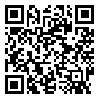BibTeX | RIS | EndNote | Medlars | ProCite | Reference Manager | RefWorks
Send citation to:
URL: http://jhsme.muq.ac.ir/article-1-42-fa.html

 1، Reza Norouzadeh2
1، Reza Norouzadeh2 
 ، Leila Mohammad Gholizadeh2
، Leila Mohammad Gholizadeh2 
 ، Saeede Heidari3
، Saeede Heidari3 
 ، Zahra Gharaboghlo3
، Zahra Gharaboghlo3 

2- Shahed University,Tehran،
3- Qom university of medical sciences،
Background and Objectives: Hijama as a form of traditional medicine is used for treatment and prevention of diseases and maintenance of homeostasis. Throughout the centuries it has been known as a national, cultural and religious form of therapy among Iranian people and also the pillars of Islamic practice and tradition. One of the common problems regarding this kind of therapy is that most patients are not fully aware of the rules of medical care before, during and after the treatment. Therefore, in order to increase the efficacy and minimizing the side effects of the treatment, determining the patients’ knowledge of hijama is essential.
Method: This is a cross-sectional study which was conducted in April - September in 2011 in the city of Qom, Iran.400 participants were randomly selected from hijama centers. The selecting criteria included an experience of at least one session of hijama treatment, no hearing problems and the ability to speak Farsi. Data collecting instrument was a questionnaire to determine the clients’ knowledge of the rules of the hijama. The data was analyzed with descriptive and analytic statistics employing SPSS software (ver. 16).
Results: The mean age of the participants was 37.99. 196 of the participants (49%) were male and 271 of them (67.8%) were married. “Health” was the most common reason for hijama. Χ2 test did not show any significant relationship between the participants’ satisfaction of hijama with any of the demographic variables (P>0.05). Easy access (71.75%) and acquaintances’ recommendations (58%) were the most common motives for going through the treatment. 72.5% attended the hijama session with a full stomach. Honey syrup was the most regular diet (43%) after hijama. 53.75% of the participants perceived the best time for bathing 24 hours after the therapy. 28.5% and 76% of the participants believed that there is no difference to hijama effectiveness regarding the hours and days of the practice.
Conclusion: The results of the study suggest that people do not have enough knowledge about the timing rules and bathing regulations after a session of hijama treatment.
| بازنشر اطلاعات | |
 |
این مقاله تحت شرایط Creative Commons Attribution-NonCommercial 4.0 International License قابل بازنشر است. |




